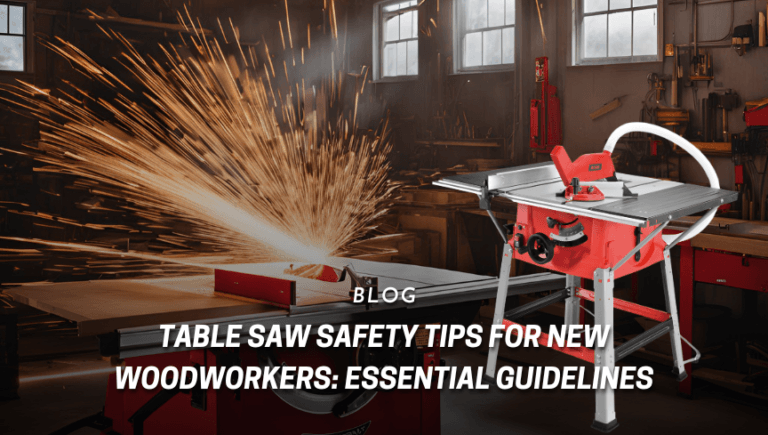Table of Contents
ToggleWhat is a Handheld Power Saw?
Handheld power saws are versatile and convenient tools commonly used on construction sites. However, they can be dangerous if proper safety precautions are not followed. It is essential to ensure that anyone operating a handheld power saw is trained and authorized before use.
Read more: History of saws.
Safety of using Handheld Power Saw:
Handheld power saws are convenient tools used on construction sites. They allow for easy cutting of materials and increase efficiency. However, these tools can be dangerous if proper safety precautions are not followed. Safety should always be the top priority when using a handheld power saw, and anyone operating it must be trained and authorized before use.
Personal Protective Equipment (PPE)
Wearing proper personal protective equipment (PPE) is crucial when using a handheld power saw. Operators should wear eye and face protection, closed-toed work shoes with good tread, dust masks, and hearing protection, depending on the task.
Kickback Prevention
Kickback is a common hazard when using a handheld power saw, which can occur when the blade stops suddenly by binding up, jamming, or hitting a foreign object. To minimize the risk of injury, operators must take all necessary precautions to prevent the blade from stopping without warning and reduce the chance of being struck if the saw does stop suddenly.
Blade and Saw Selection
Using the appropriate saw for the task is crucial when using a handheld power saw. Operators must ensure that the blade is clean and sharp. Dull blades or blades sticky with sap or other materials are more likely to bind up in cuts. They must only use a power saw that is light enough to lift and control. Additionally, they must not make off-center or crooked cuts and only cut in straight lines. Operators must remove cracked or damaged saw blades from service.
Portable Circular Saw Safety
Handheld circular saws have an even greater risk of operator contact with the turning blade. Portable circular saws must have an upper guard that covers the entire blade of the saw and a retractable lower guard. The lower guard must never be altered by tying or wedging it open. Handheld circular saws with blades greater than one-fourth inch must have a constant-pressure control. The cutting depth should be as shallow as possible, and the blade should not protrude more than a little below the cut stock.
Changing the Blade
Operators must ensure they can see and control the plug when changing the blade so no one else plugs it in accidentally. Alternatively, they can put the plug in a plastic lockbox.
Silica Dust Hazard
A handheld power saw used to cut masonry, concrete, stone, or other silica-containing materials can generate respirable crystalline silica dust, which can cause irreversible damage to the lungs if inhaled. To reduce dust generation when cutting, many handheld power saws come equipped with an integrated water delivery system. Water flow must be sufficient to minimize the release of visible dust, and the power saw and dust-control equipment must be operated and maintained according to the manufacturer’s instructions. Clean up any slurry produced during wet cutting to prevent the slurry from drying and releasing silica dust into the air.
Ventilation and Electrical Safety
Extra ventilation or exhaust may be necessary when wet cutting indoors or enclosed areas to reduce visible airborne dust. It is important to ensure that the ventilation is positioned to move contaminated air away from the workers’ breathing zones, and electrical safety should be a concern when water is used to control dust. Ground-fault circuit interrupters (GFCIs) and watertight, sealable electrical connectors for electric tools and equipment should be used.
Respiratory Protection
Respiratory protection with a minimum Assigned Protection Factor (APF) of 10 is required when wet cutting with handheld masonry saws indoors or in an enclosed area or outdoors for more than four hours per shift.
Conclusion
In conclusion, prioritizing safety when using handheld power saws on construction sites is crucial. Adhering to established safety guidelines, using appropriate personal protective equipment, and implementing measures to minimize dust generation and adequate ventilation are essential for minimizing the risk of injury. By following these safety tips, operators can use handheld power saws safely and efficiently.
You May Also Like:
- Comparing Circular Saw, Miter Saw, and Table Saw: Best Option for Beginner Woodworkers?
- Cutting Made Easy: Understanding Different Types of Power Saws and Their Purposes.
- Reflective Vests: A Small Investment for a Big Increase in Safety
- Miter Saws vs Circular Saws: Which Tool is Right for Your Next Project?





